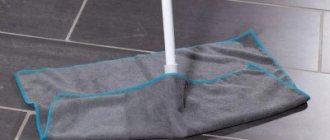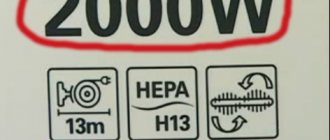If the frame material is intolerant to water, then you should use specialized products for optics. In addition, the correct use of these tools and tools is important.
This way, you will save yourself from unnecessary expenses on repairing old frames or buying new ones. Anything will stick - 3 ways to clean glasses at home.
How to wash a microfiber glasses cloth?
Tapperware Care and cleaning of microfiber products To remove stains, wash the product with detergents designed for hand washing or machine washing in cold water or at a temperature not exceeding 60°C.
For best results, place the tissue in a separate bag before washing in the washing machine to prevent the outer fibers from sticking to the sides of the machine. When washing the product, you can also use laundry soap. Dry at moderate temperature. Care for your microfiber cloth in the same way as you would for your fine fabrics. Do not use fabric softener. The softener remains on the microfiber and reduces its ability to absorb water, clean and collect dirt. Do not use bleach when washing microfiber items. Once purchased, we recommend hand washing the cloth once before use to ensure optimal performance. Some colors may fade due to natural pigments, so we recommend washing the microfiber cloth separately or with items of the same color the first 3 times. Duration of use Despite the fact that microfiber is considered the softest material ever created by man, it is also incredibly durable. Split microfibers have thousands of “loops” per square centimeter, and high-quality microfiber fabrics have over 30,000 constituent threads per square centimeter of material. This high fiber density creates a fabric that can withstand over 500 washes! Thanks to the reusability of such fabric, we can consider it extremely cost-effective.
Source
What is microfiber made of?
The fabric consists of individual fibers from polyester or polyamide, processed into multifilament yarn. It is only twice as thick as cotton - about five microns. Fine-mesh and close pieces of fabric are woven from threads. Some napkins are made up of individual fibers joined together. They are of higher quality.
Daughter and son of Ostap Bender: what happened to the children of Archil Gomiashvili
We bake a whole basket of “mushrooms”: we take a plastic bottle to help
Creating a bright image is real art therapy: sharing ideas
How to wash a napkin?
This can be done using non-aggressive soap products manually or in a machine with water at a temperature not exceeding 40° . Laundry soap is perfect because it has bactericidal properties. When washing in a machine, it is better to use a special bag. It is undesirable to use boiling water, air conditioners, or bleaches of any type. It is also not recommended to dry microfiber on a radiator or iron it.
Important! For the first time, wash a colored napkin by hand, soaking it separately from the rest of the laundry, as it can fade and stain other things.
Handwash
Small microfiber items, as well as those that are not heavily soiled, can be washed by hand. This fabric is easy to wash. For washing, you can use laundry or baby soap, as well as liquid detergent.
If you just need to refresh an item, rinse it in a soapy solution, then in clean water. There is no need to twist it too much, microfiber dries quickly. If the item is dirty, you can soak it in a detergent solution for 1-2 hours. For more serious stains, it is recommended to soak microfiber items in a hot soapy solution. Its temperature should be no more than 50-600. Immerse items in the solution and leave overnight. In the morning all that remains is to rinse.
Advice! It is not necessary to rub the stain - you can disrupt the fiber structure. If it does not wash off, you need to soap and rinse again.
Cleaning rags are often made from microfiber. They are very comfortable, but get dirty quickly. It is recommended to wash them separately.
Method one
You can wash microfiber cloths with a paste of baking soda and water. You need to take 1-2 tablespoons of baking soda and add warm water little by little until a thick paste is formed. You need to wash it like this:
- wet the cloth;
- coat thickly with paste;
- leave for an hour;
- immerse in warm soapy solution;
- wash;
- rinse under running water.
Method two
Heavy stains can be removed with lemon juice. What is needed for this:
- pour 5-7 liters of warm water into a basin;
- squeeze the juice from half or a whole lemon into it;
- immerse the napkins and leave for 1-2 hours;
- wash in the usual way.
Washing microfiber items is easy. If you follow these simple recommendations, they will last a long time and will not lose their properties.
How long can I use it afterwards?
The threads from which the napkin is made, due to their structure, have high strength and wear resistance. Therefore, they can withstand long-term use and repeated washing (up to 500 times!) . Undoubtedly, this is cost-effective. In addition, the cloth will not take up much space in your purse or pocket.
Regular use of this napkin will extend the life of your glasses, maintain the integrity of the lens coating and clarity of vision.
Types of wipes for glasses
They are made of microfiber - fabric with thin fibers . By the way, this is where its name comes from – a derivative of the word “micro”. The basis is polyamide and polyester, which perfectly absorb moisture and fat.
According to their physical characteristics, they are soft, durable, elastic, quick-drying, wrinkle-resistant, and have a slightly velvety tactile sensation. And the ability to accumulate static electricity makes it possible to attract dust and lint very well. The cloth can be used both dry and wet.
Why wipe your glasses?
Eyeglasses are made from many materials; many people prefer glass and plastic models. Today, modern materials with protective coatings are used, which make lenses more resistant to scratches and other damage. Despite this, you need to take good care of your glasses. While wearing them, they get dust, dirt, particles of epidermis, and sweat. Stains remain on them and spots appear. Firstly, such glasses look unaesthetic, so it should be kept clean. Secondly, dirty glass affects the quality of correction. With such glasses, the image is not clear enough. Their eyes get tired and red. Asthenopia and other unpleasant ophthalmological symptoms develop. There is another important aspect. High-quality branded glasses are not cheap. Careful handling will allow you to avoid unnecessary expenses associated with replacing glasses and frames. Let's find out how you can wipe your glasses lenses and what products are used to care for them.
Types of glasses for glasses
According to statistics, a quarter of all inhabitants of our planet wear glasses. This is why it is so important to know the features of glasses care. But before you understand the rules and methods of cleaning, it is worth knowing what they can be made of, since the features of use and maintenance largely depend on the material of manufacture.
What can eyeglass lenses be made of?
- Glass. Their main advantage is that they are durable, reliable, and also help with various pathologies of visual function in humans. They are durable, but it is important to properly and daily care for such an accessory. At the very least it needs to be wiped down. The disadvantages include fragility, since it is glass, quite heavy weight, and not a very aesthetically beautiful appearance. Although recently many models for vision correction have appeared that can become a fashion accessory.
In order to figure out which glasses lenses are best to choose, you should visit an ophthalmologist, and then choose from the available model range.
- Plastic. Glasses made of plastic are much cheaper than their glass counterparts. They are lighter and thinner, but the glass itself is easily susceptible to mechanical stress, since any scratch, even a minor one, can ruin the appearance of the accessory.
- Plastic with anti-reflective coating. These glasses have the same advantages and disadvantages as accessories made from regular soft plastic, but they require more careful care.
Microfiber is better!
As it turned out in the course of a study conducted by Professor Degle, the use of wet wipes can be fraught with other problems. Particles of dust and dirt rubbed with a cloth over the surface of dry eyeglass lenses can cause scratches on them. These scratches cannot always be seen with the naked eye - their size depends on the size and properties of the particles of the contaminants themselves. In this light, microfiber cloths*** seem to be a much more suitable solution: when cleaning lenses with such a cloth, dirt particles are drawn into the fibers and held there. In this case, the pressure on the lenses is minimal, and the likelihood of scratches on them is many times less than when wiping with a thin damp cloth, when dirt particles remain on the surface. In addition, unlike wet wipes, which do a rather mediocre job of cleaning eyeglass lenses from greasy fingerprints, traditional microfiber wipes completely solve this pressing problem for consumers.
It seems that the point in the dispute between supporters and opponents of wet wipes for glasses has not yet been finally settled. Be that as it may, these napkins are not intended for constant use, and their responsible manufacturers do not hide this fact. Don’t forget about this, our dear readers, and try to follow the rules that we give below when caring for your glasses. Good old rules for cleaning lenses from dirt:
- Wash glasses under running water. If the lenses are very dirty, you can use a drop of a cleaning product with a pH-neutral formula.
- Carefully polish the glasses with a microfiber cloth, which is recommended to be washed at a temperature not exceeding 40 °C and without using air conditioner.
- It is not recommended to use regular paper towels and napkins to wipe eyeglass lenses, as they may contain coarse wood fibers that can damage the coating.
*Hereinafter cited. by: Braunlein J. Brillenpflege // Eyebizz. 2017. N 1. S. 46–47. ** The remaining 15% of lens damage was attributed to wearer failure to properly handle glasses. *** The name “microfiber” itself comes from the technology for producing ultra-thin fibers, the diameter of which is only 0.06 mm. PREPARED BY ELENA CHULANOVA BASED ON MATERIALS OF EYEBIZZ MAGAZINE (2017. N 1), AS WELL AS SITES NDR.DE (WWW.NDR.DE) AND PT-MAGAZIN FUER WIRTSCHAFT UND GESELLSCHAFT (WWW.PT-MAGAZIN.DE)
Methods for cleaning glasses
Anything can end up on the lenses. This includes dust, remnants of cream or skin flakes, fingerprints and much more. All this reduces the quality of a person’s vision, regardless of whether they are glasses for pathologies of visual function or a regular sun protection accessory.
It is important to systematically clean, since dirt tends to eat into scratches and cracks, if any, and then the quality of vision noticeably decreases.
The main methods for cleaning glasses include the following:
- Using special or professional care products. They are sold in special optical stores or pharmacies. They can be in the form of a spray or liquid, depending on the lens material. It is important that such professional products are free of alcohol and abrasive materials.
- Using napkins (soft or damp). Microfiber cloths are soft, remove dust, particles of grease and skin flakes well, and do not scratch the surface. This product is suitable for glass and plastic accessories. An analogue could be suede napkins. Wet wipes for glasses, which are impregnated with a special solution, are mainly intended for glasses. They not only remove dirt from the surface, but also prevent the growth of bacteria. If the composition contains antibacterial substances, they may leave streaks on the plastic surface. Therefore, before wiping your glasses with such products, you need to know the composition of the substance.
- Using household cleaning products. This could be soap, shampoo or dishwashing detergent that actively fights fat. The accessory is washed using these products under running water. Dirt is easily removed, but after that you need to let the glasses dry, preferably in a vertical position.
- Glasses prescription - where to get and correctly decipher the form
- Glasses for constant wear for myopia
- What are yellow glasses for? Why special yellow glasses for drivers?
- How to choose swimming goggles
Anti-fog sprays for glasses
They are special liquids for cleaning optics, including glasses. These sprays contain components that ensure thorough cleaning of glass without streaks. Some liquids have antistatic, antifog and even disinfectant properties. Similar products are produced by (Good Look Antifog), Bentus Laboratories (Sanitelle). These sprays are used as follows: apply it to the entire surface of the glass and wipe gently with a special cloth. This will remove all contaminants. To protect your glasses from fogging, simply spray the lens spray and leave until completely dry.
What should you not use?
There are always a lot of household products that seem to be able to be used to clean the surface of glasses. So, some people choose handkerchiefs, scraps of fabric, clothes as napkins for them, and ammonia or simple alcohol, vinegar and liquid for washing glass and mirrors as products.
Why is it not worth wiping lenses with them? Although fabric, clothing, and handkerchiefs may be soft to the touch, they can scratch the soft surface of the glasses. Microcracks may not be visible at first glance, but dirt will accumulate in them.
Alcohol or vinegar does not make glass cleaner, and can even harm plastic. Window cleaning liquid is an extreme option that can only be used in extremely rare cases due to the large number of destructive substances in its composition.
Wet wipe – good or bad?
Despite all the efforts of manufacturers, none of them have yet succeeded in inventing self-cleaning spectacle lenses. This means that dust, dirt, secretions from sweat glands, and particles of exfoliated skin to a greater or lesser extent always settle on the surface of the lenses, thereby worsening their optical properties. To clean lenses, glasses users often use special wet wipes, which can be bought anywhere today. They traditionally contain water, flavor (usually citrus), anionic or nonionic surfactants, and alcohol. “The components contained in spectacle wipes do not cause any harm to spectacle lenses,” was the verdict issued in June 2022 by the Institute of Physical Chemistry of the Friedrich Schiller University of Jena*. In collaboration with RCP Ranstedt, which annually produces several billion eyeglass wipes for various companies, the institute's working group, led by Professor Dr. Helga Dunken, tested samples of commercially available wipes to determine their safety for eyeglass lenses - how mineral and organic. Despite the positive verdict, in 220 cases flaws were still found on the lenses during the study. The press release gave the following explanation for this: “In 85% of cases of damage**, they were caused by poor-quality coating of budget eyeglass lenses.” This meant that the scratches on the lenses appeared even before they were cleaned with wet wipes; in this case, any, even the most minimal thermal or mechanical impact may be enough to render the coating unusable.
How to properly clean glasses
First you need to determine the type of lenses. This must be done, since glass materials may differ from each other in the degree of scratch resistance, reaction to chemicals and high temperatures.
How to clean plastic glasses
Plastic lenses are flexible and lightweight, but they are prone to scratches and tarnish. Therefore, you can care for plastic lenses using:
- soft warm water with a small amount of cleaning agent;
- products that do not leave streaks;
— chemical liquids;
- soft rags made from natural materials.
It is best to use special napkins that can be purchased at optical stores.
How to wipe glasses with a microfiber cloth?
Plastic glasses can be wiped with microfiber cloths. This is a soft fabric that resembles suede. Such wipes are used not only for lens care. They are even used for cleaning premises. The benefits of microfiber cloths are that they do not leave streaks or lint. Moreover, they are not intended for one-time use. They can be washed. At the same time, both in the washing machine and by hand, using conventional detergents. The packaging should indicate how many washing cycles the fabric can withstand (usually 90-300). It is not suitable for glass glasses. It is better to opt for disposable napkins.
How to store vision glasses?
It is worth understanding that glasses intended to be worn for pathologies of visual function require careful handling, as well as regular care. Having figured out how to clean glasses for vision correction, you should pay attention to their proper storage.
The rules for storing and maintaining vision glasses are as follows:
- storage only in a special case when not in use (this will protect the accessory from mechanical damage);
- put on and take off glasses with both hands, since the fragile frames can easily become warped;
- the lenses are wiped with a special soft microfiber or suede cloth, which, as a rule, goes on sale along with the accessory;
- You should periodically wash your glasses with soapy water and running water without using active cleaners or acetone;
- a sharp change in temperature can lead to brittleness and damage the integrity of the glasses;
- Do not place the accessory on a hard surface, as there is a high risk of damage to the lenses.
How to wash microfiber in a washing machine
Microfiber can be washed in a washing machine. If you choose the right detergent and mode, the item can withstand up to 500 washes. Simple recommendations will help you understand how to wash microfiber in a machine correctly:
- things made from this fabric are usually bulky, so you shouldn’t overload the machine, it should be a quarter empty;
- It is best to set the temperature to 30-400;
- It is advisable to choose a delicate mode without spinning;
- It is not recommended to load things that can fade with microfiber; this fabric easily absorbs paint;
- It is advisable to wash such products separately, since all the lint and hairs from other fabrics will collect on the surface of the microfiber;
- It is best to use a liquid detergent without bleach or conditioner.
If the item is heavily soiled, you should not increase the amount of detergent; it is better to first soak it for 10-12 hours in a detergent solution. You can also soap the stain with laundry soap, leave it for an hour, and then wash it in the machine.
Basic Rules
Improper washing can damage the product by disrupting the fiber structure. There are several rules that will help you understand how to wash microfiber correctly:
- the water temperature should not exceed 40-600;
- do not boil;
- do not dry in a car or on a radiator;
- You cannot iron such products;
- Do not use bleach, especially with chlorine, to remove stains.
It is also important to know how to wash such products. It is recommended to use laundry soap or liquid laundry detergent. The powder is difficult to rinse out of microfiber fibers and will make the fabric hard.
Advice! It is not recommended to add conditioner. It also clogs the fibers, after which you will have to rinse the item thoroughly.
When choosing sun protection accessories, as a rule, there is no question of which glasses lenses are best to choose. Here the main emphasis is usually on trends and fashion trends. But it is also important to pay attention to quality and know how to care for such glasses.
Rules for caring for sunglasses are given below:
- the case will protect the accessory from mechanical damage;
- you need to take off and put on glasses carefully, since the plastic frame, which is present in most models, can easily break;
- The microfiber cloth included in the kit is an excellent cleaning tool;
- You can wash your glasses under warm running water without using soap, but then you need to let them dry or wipe them with a dry cloth.
Can glasses lenses be washed with regular soapy water?
If you have nothing to wipe your glasses with, that is, there are no napkins or sprays specially designed for this at hand, hot water and soap will come to your aid. First, rinse your lenses with warm water. Dissolve soap in water and apply the foam that forms on its surface to the glass. Rub them with your hands and rinse again with clean water. After drying, there should be no streaks on the lenses. During the care process, you can also clean the frame. Use cotton swabs for this. The “disadvantage” of this method of care is the impossibility of using it outside the home.
Useful tips
When cleaning plastic frames of glasses, regardless of their purpose, pay attention to the gaps where a lot of dirt collects. It can be removed using cotton swabs.
Glasses wipes should be washed regularly to prevent dirt from collecting on them.
To avoid losing or breaking the accessory, you can hang it on a special chain.
After water procedures, glasses should dry in a vertical position; as they dry, it is important to wipe them with a dry soft cloth.
After cleaning, check its quality. Take the accessory by the handles and hold it up to the light: if there are no streaks on the lenses, then the cleaning process was completed correctly. If not, repeat it.
Be careful, alcohol!
Perhaps everyone would have believed in the absolute safety of wet wipes for glasses if the topic had not interested the editors of Markt, the consumer magazine of the North German radio company (NDR), and they would not have commissioned specialists from the Ernst Abbe Hochschule Jena to conduct their examination of six different wet wipes manufacturers. During the examination, carried out under the leadership of Professor Stefan Degle, experts came to the conclusion that the alcohol included in most wet wipes for glasses can corrode some types of plastics. For example, polycarbonate is sensitive to the effects of alcohol, which, due to its high strength and resistance to impact loads, is widely used in the production of lenses for children's and sports glasses.
The alcohol contained in wet wipes can pose a threat not only to eyeglass lenses, but also to frames made, for example, from certain plastics and natural materials. Thus, the material TR-90, widely used in the production of sports glasses, breaks down under the influence of alcohol, and the surface layer of a number of other materials suffers. Theoretically, you can, of course, purchase napkins without alcohol. But only theoretically: as Markt magazine reports, the manufacturer is obliged to write on the packaging that the product contains alcohol only if its alcohol content is 20% or more. And only a few manufacturers indicate the complete absence of alcohol in their wipes. However, even alcohol-free wet wipes do not seem to be the best solution for caring for eyeglass lenses. “We know that the popular anionic surfactants to which the wipes owe their cleaning effect pose a threat to at least polycarbonate lenses, and therefore to most sunglasses. For this reason, by the way, wet wipes are not allowed to wipe windows on airplanes. From their use, scratches first appear, and then the top layer dissolves at the site of the scratch. Contact with sweat and cleaning products contributes to this,” says Britta Hoffmann of the German company Deutsche Augenoptik, a major supplier of vision correction products.
Source











